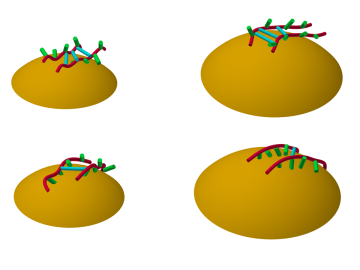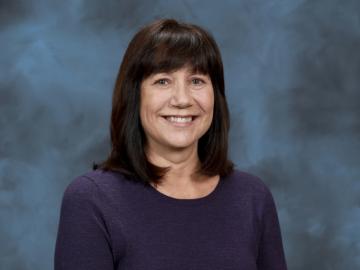
Filter News
Area of Research
- (-) Energy Science (64)
- (-) Materials (54)
- Advanced Manufacturing (5)
- Biological Systems (1)
- Biology and Environment (21)
- Computational Biology (1)
- Computer Science (2)
- Electricity and Smart Grid (2)
- Functional Materials for Energy (1)
- Fusion and Fission (4)
- Fusion Energy (2)
- Isotopes (2)
- Materials Characterization (1)
- Materials for Computing (11)
- Materials Under Extremes (1)
- National Security (5)
- Neutron Science (12)
- Nuclear Science and Technology (1)
- Quantum information Science (1)
- Sensors and Controls (1)
- Supercomputing (14)
- Transportation Systems (2)
News Type
News Topics
- (-) Bioenergy (6)
- (-) Biomedical (3)
- (-) Grid (17)
- (-) Materials Science (37)
- (-) Microscopy (14)
- (-) Polymers (10)
- (-) Transportation (35)
- 3-D Printing/Advanced Manufacturing (40)
- Advanced Reactors (4)
- Artificial Intelligence (4)
- Big Data (3)
- Biology (5)
- Biotechnology (1)
- Buildings (18)
- Chemical Sciences (12)
- Clean Water (4)
- Composites (11)
- Computer Science (15)
- Coronavirus (5)
- Critical Materials (9)
- Cybersecurity (2)
- Energy Storage (37)
- Environment (26)
- Frontier (2)
- Fusion (4)
- High-Performance Computing (4)
- Hydropower (2)
- Irradiation (1)
- Isotopes (4)
- ITER (1)
- Machine Learning (4)
- Materials (47)
- Mathematics (1)
- Mercury (1)
- Molten Salt (2)
- Nanotechnology (18)
- National Security (1)
- Neutron Science (10)
- Nuclear Energy (6)
- Partnerships (2)
- Physics (7)
- Quantum Computing (2)
- Quantum Science (2)
- Simulation (2)
- Space Exploration (3)
- Statistics (1)
Media Contacts

Oak Ridge National Laboratory has teamed with Cornell College and the University of Tennessee to study ways to repurpose waste soft drinks for carbon capture that could help cut carbon dioxide emissions.

A team of researchers at Oak Ridge National Laboratory have demonstrated that designed synthetic polymers can serve as a high-performance binding material for next-generation lithium-ion batteries.

Scientists have discovered a way to alter heat transport in thermoelectric materials, a finding that may ultimately improve energy efficiency as the materials

Scientists at Oak Ridge National Laboratory have developed a low-cost, printed, flexible sensor that can wrap around power cables to precisely monitor electrical loads from household appliances to support grid operations.

OAK RIDGE, Tenn., March 22, 2019 – Karren Leslie More, a researcher at the Department of Energy’s Oak Ridge National Laboratory, has been elected fellow of the Microscopy Society of America (MSA) professional organization.

Oak Ridge National Laboratory’s latest Transportation Energy Data Book: Edition 37 reports that the number of vehicles nationwide is growing faster than the population, with sales more than 17 million since 2015, and the average household vehicle travels more than 11,000 miles per year.

Scientists have tested a novel heat-shielding graphite foam, originally created at Oak Ridge National Laboratory, at Germany’s Wendelstein 7-X stellarator with promising results for use in plasma-facing components of fusion reactors.

Oak Ridge National Laboratory scientists have created open source software that scales up analysis of motor designs to run on the fastest computers available, including those accessible to outside users at the Oak Ridge Leadership Computing Facility.

Oak Ridge National Laboratory scientists studying fuel cells as a potential alternative to internal combustion engines used sophisticated electron microscopy to investigate the benefits of replacing high-cost platinum with a lower cost, carbon-nitrogen-manganese-based catalyst.

Self-driving cars promise to keep traffic moving smoothly and reduce fuel usage, but proving those advantages has been a challenge with so few connected and automated vehicles, or CAVs, currently on the road.


